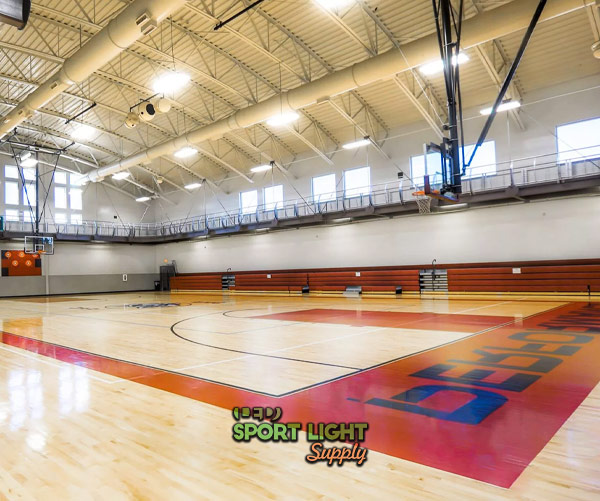
A comprehensive guide to basketball court lighting standards must address three critical aspects: the foundational concepts behind each requirement, the technical challenges involved, and the preventive measures necessary to avoid potential issues. Whether the game is played indoors or outdoors, the design of the arena significantly influences the appropriate lighting standards. For example, indoor courts have different needs compared to outdoor courts due to factors like natural light availability and ceiling height. Proper lighting is essential for the game, as it can impact crucial moments, such as a decisive shot from the free-throw line. Additionally, structural limitations in sports facilities can affect lighting options, making it vital to work with a professional company to ensure a meticulously planned layout that avoids technical errors and aesthetic issues.
Maintaining optimal lighting conditions is not just about enhancing the game experience; it is crucial for player safety and the overall integrity of the venue. Poor lighting can lead to accidents, diminish the quality of play, and create an unprofessional atmosphere. Therefore, vigilance in maintaining perfect lighting conditions is essential for any sports facility. Understanding and adhering to lighting standards involves more than meeting basic requirements; it demands a thorough comprehension of concepts, addressing technical challenges, and taking proactive measures to prevent issues. By doing so, you can ensure that your basketball court provides a safe, enjoyable, and visually appealing environment for players and spectators alike.
Table of Contents
ToggleImportance of Fulfilling the Basketball Court Lighting Standard
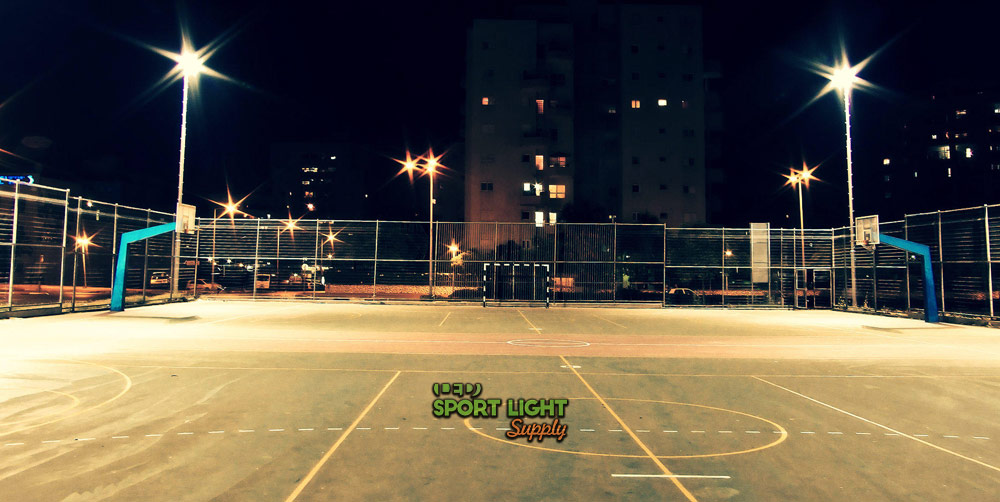
Outdoor Basketball Court Lighting Standards
Playing basketball requires precise hand-eye and foot-eye coordination, and while the players are the primary focus on the court, they are not the only ones who need optimal lighting. Referees, who are responsible for managing the game, and spectators, who are there to enjoy the event, also depend on proper lighting conditions. For referees, clear visibility is crucial for making accurate calls. They rely on even light distribution to ensure their signals, such as a thumbs-up or a cupped hand, are visible to players, coaches, and fans alike. This clarity in communication is essential for maintaining the flow of the game and ensuring that everyone understands what is happening on the court.
Spectators, who pay to watch the match or special event, also have high expectations. Whether it’s a local game or an NBA event, they expect to enjoy the game without any visual discomfort. Good lighting enhances their experience, providing clear visibility and reducing the risk of eye strain or fatigue. Beyond the immediate experience, fulfilling the lighting standards is critical for the long-term success of the venue. Proper lighting ensures not only the safety and comfort of everyone involved but also maximizes the return on investment. This is especially true for venues that broadcast games live. High-end video cameras used by broadcasters require high-quality LED lights to capture crisp images and convert them into digital data. Adhering to the broadcasting standard, which includes specific lighting requirements, is essential to deliver a seamless viewing experience both in the arena and for audiences watching remotely.
Basketball Court Lighting Standards
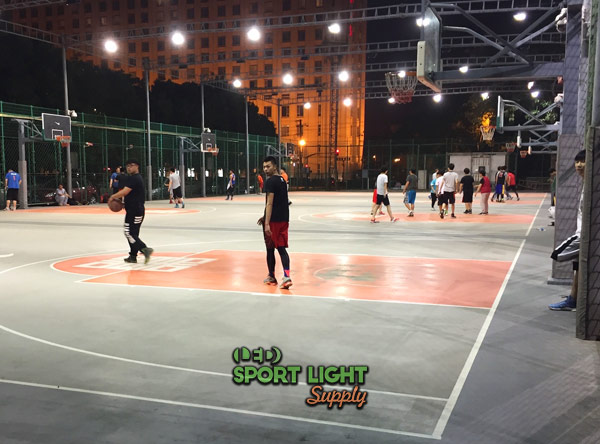
Lux and Brightness Requirement
When it comes to basketball court lighting, one of the most critical factors is light intensity, which directly affects the visibility and overall experience for both players and spectators. Light intensity is often measured in lumens, which quantify the brightness emitted by a light source. However, for professional basketball courts, the lumen output alone is not sufficient to meet the required standards. The height and positioning of the lights also play a significant role in determining the overall brightness within the arena. This is where the concept of lux comes into play.
Lux measures the amount of light that reaches a surface area and is a more accurate indicator of the effective brightness on the court. The basketball lighting standard is categorized into three classes, each tailored to a specific level of play. Class I includes international competitions and televised NBA games, requiring a minimum of 1,000 lux, though values up to 2,500 lux may be necessary for higher-level competitions. Class II, which covers national basketball games and tournaments, requires between 700 and 999 lux. Lastly, Class III, which applies to high school matches and recreational activities, demands a lux range of 250 to 699. Adhering to these lux requirements ensures that the court is adequately illuminated for the level of play, enhancing both safety and performance.
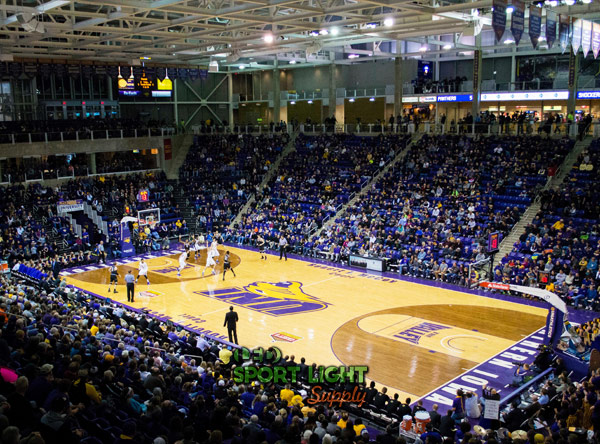
Lighting Uniformity Standard
Achieving the right lux levels is essential, but ensuring that the light is evenly distributed across the entire basketball court is equally important. The lighting uniformity standard, applicable to both outdoor and indoor courts, guarantees that every part of the court receives consistent illumination. This standard is crucial at the professional level, where the court must provide adequate horizontal and vertical illumination for players, referees, and spectators.
To assess lighting uniformity, the court is divided into a grid, and lux readings are taken at each grid point. These readings are then used to calculate uniformity values, U1 and U2, which are derived by dividing the lowest lux value by the maximum (U1) and the average lux value (U2). Class I courts typically require a uniformity of at least 0.8 for both U1 and U2 in horizontal and vertical illumination. For lower-level games, a horizontal uniformity of 0.6 for U1 and 0.7 for U2 is sufficient. For Class III events, maintaining a U1 of 0.5 and a U2 of 0.6 is essential for safety. This level of precision ensures that the lighting on the court is consistent, preventing any dark spots or overly bright areas that could impact the game.
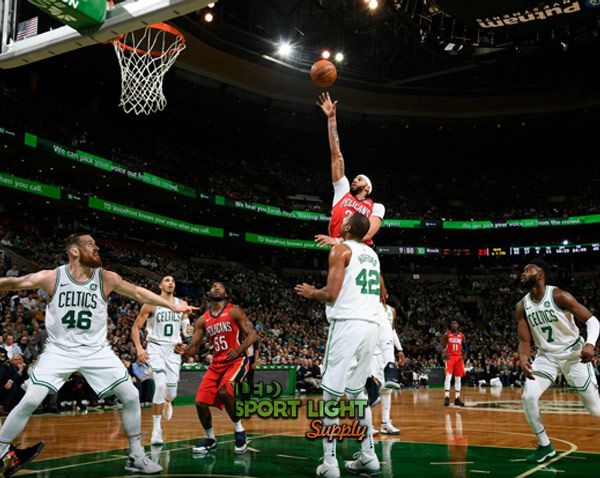
CRI and TLCI
In the context of broadcasting basketball games, the color rendering index (CRI) and the Television Lighting Consistency Index (TLCI) are vital considerations. The CRI measures how accurately a light source reveals the true colors of objects in comparison to natural light. For live broadcasts and recordings, accurate color representation is crucial, as it ensures that the images captured by cameras appear true to life.
The TLCI specifically evaluates how well a light source renders colors for video cameras, which is particularly important in professional sports broadcasting. In a basketball stadium, where the number of video cameras might be limited, the quality of light can significantly affect the recording, especially during live streams and TV broadcasts. To achieve the best results, it is recommended to use LED lights with a CRI of at least 85 Ra and a TLCI above 90. These specifications ensure that the lighting is not only suitable for the human eye but also for high-definition broadcasting.
Anti-Glare
While CRI and TLCI are crucial for color accuracy and broadcasting, controlling glare is essential for the comfort and safety of the players. Basketball players constantly move their eyes across the court, scanning for opportunities and tracking the ball. Excessive glare from lights can hinder their vision, leading to missed plays or even accidents.
To prevent this, lights used in basketball courts must feature an anti-glare design. A glare rating above 50 is generally considered unacceptable, as it can create visual discomfort for players and referees. Lighting designers take into account the positioning and intensity of light sources to minimize glare. They often use specialized software to simulate and calculate the optimal lighting setup, ensuring that the glare is controlled and does not interfere with the game. The glare ratings may vary depending on the position and direction of the gaze, making it important to tailor the lighting design to the specific layout of the court.
Color Temperature
Color temperature is another important consideration when selecting lights for a basketball court. The color temperature of a light source, measured in Kelvin (K), determines whether the light appears warm or cool. This characteristic can significantly impact the atmosphere on the court and the players’ focus.
Basketball associations may not always specify a standard color temperature, but it is generally advisable to choose a temperature that enhances visibility and comfort. A cool white light, with a color temperature above 3,000 K, is often preferred as it helps players maintain focus during the game. Higher Kelvin values result in a bluish light, while lower values produce a warm, yellowish glow. Selecting the appropriate color temperature ensures that the lighting not only meets aesthetic preferences but also supports optimal performance on the court.
Other Standards
In addition to the key standards mentioned above, indoor basketball stadiums may have specific height and distance requirements for lighting installations. Generally, a minimum height of 23 feet (7 meters) is recommended for the fixtures, with lights illuminating the paint from the sides at a similar distance from the center fixtures. If additional fixtures are used to light neutral zones, a distance of 13 feet (4 meters) should separate them.
Over time, the light output from fixtures can depreciate, so it is important to monitor any changes and maintain a minimum maintenance factor of 80% before considering a new professional assessment. LED lights, known for their long lifespan, are highly recommended for basketball courts. However, if non-LED lights are used, additional security or safety standards may apply. To ensure compliance with all relevant guidelines, it is advisable to consult with your basketball association for any specific lighting requirements that may need to be met.
Outdoor Basketball Court Lighting Issues

Light Pollution Requirements
When designing an outdoor basketball stadium, it’s crucial to consider the impact of light pollution on the surrounding environment. Light pollution, particularly sky glow, can negatively affect both humans and wildlife. Excessive artificial light spilling beyond the court can create safety hazards, such as increasing the risk of car accidents in nearby areas, and can be a nuisance to neighboring communities. To mitigate light pollution, the lighting design should focus on reducing light trespass by ensuring that light only illuminates the court and doesn’t scatter into unwanted areas. This can be achieved by using specific light shielding, efficient grouping of light sources, and minimizing unnecessary brightness, which also helps reduce energy consumption. Consulting with a lighting expert can help in creating a design that balances visibility with environmental responsibility.
Waterproof Standards for Outdoor Basketball Court Lights
Outdoor basketball courts are exposed to various environmental factors, including rain, snow, sand, and dirt. To ensure the longevity and reliability of the lighting fixtures, it’s essential to select lights with appropriate waterproof standards. The Ingress Protection (IP) rating on a fixture’s specification sheet indicates its ability to withstand these conditions. The IP rating consists of two numbers: the first number indicates protection against solid objects like dust, while the second number indicates resistance to moisture and water. For outdoor sports lighting, a high IP rating, such as IP67 or IP68, is recommended. These ratings ensure that the fixtures are dust-tight and can withstand immersion in water, making them suitable for outdoor use in various weather conditions.
Lightning Protection
Lightning strikes pose a significant threat to outdoor basketball courts, especially those with high mast lighting. A single lightning strike can deliver over 100 million volts of electricity, leading to severe injuries, property damage, and the destruction of lighting fixtures. To protect the court and its infrastructure, installing a lightning protection system is essential. This system typically includes lightning rods connected to a grounding network. The rods intercept lightning strikes and safely direct the electrical charge into the ground, preventing damage to the lights, electronics, and spectators. Additionally, a surge protection system can provide extra security for the electronic components of the lighting system, further reducing the risk of damage during a storm.
Lighting Control System
A lighting control system offers flexibility in managing the court’s lighting during games and events. Such a system allows operators to adjust the intensity of the lights during breaks, create dynamic lighting effects for halftime shows, and manage different areas of the stadium independently. Modern lighting control systems can be operated remotely via smartphones or touchscreens, making it easy to customize the lighting experience. These systems can also integrate with other stadium systems, such as audio, video, and HVAC, to create a cohesive and immersive environment for spectators. By implementing a custom lighting control system, stadium operators can enhance the overall experience while optimizing energy use and ensuring that the lighting is tailored to the specific needs of each event.
Indoor Basketball Court Lighting Issues
Heat Dissipation
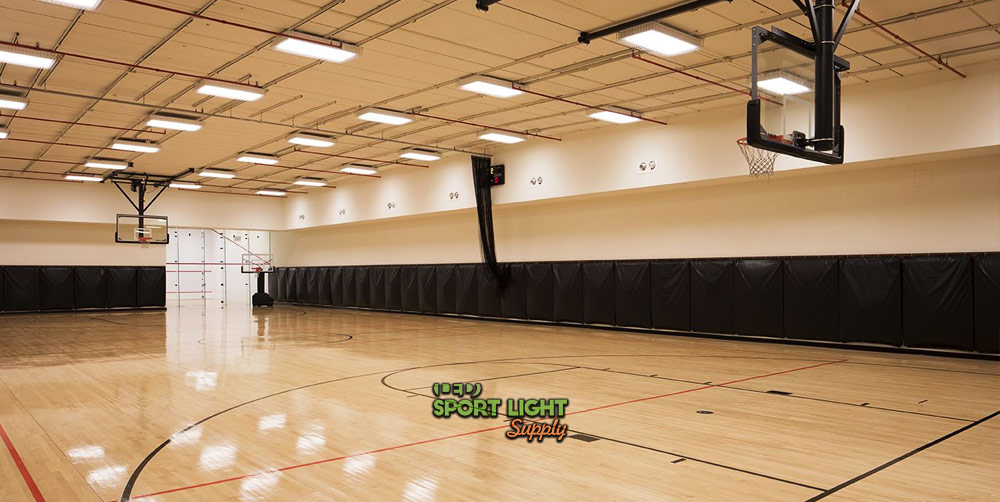
One of the primary concerns in indoor basketball court lighting is managing heat dissipation. Traditional lighting sources like Metal Halide (MH) and High-Pressure Sodium (HPS) lamps generate significant heat, which can accumulate near the ceiling and reduce the lifespan of the fixtures. The trapped heat can lead to frequent bulb failures, especially during high-temperature conditions. To combat this, regular air exchange is essential, but a more effective solution is to switch to LED lighting.
LED lights are known for generating less heat compared to traditional lighting. They come equipped with high-quality heatsinks that maintain an acceptable operating temperature, thus prolonging the lifespan of the lights. In environments prone to extreme heat, LED lights are less likely to fail, providing a more reliable lighting solution. Although air conditioning systems help manage indoor temperatures, they are not sufficient on their own to counteract the heat accumulation near the ceiling. Since hot air naturally rises, it can interfere with broadcasting equipment and create uneven temperature distribution. Therefore, a well-designed lighting system should consider these temperature variations, particularly in stadiums with lower ceilings, and incorporate advanced heat dissipation systems.
Direct or Indirect Lighting
The choice between direct and indirect lighting significantly impacts the ambiance and functionality of an indoor basketball court. Direct lighting is the most common and cost-effective option, where lights are aimed directly at the playing surface. However, this approach can create glare, potentially blinding spectators and referees, and causing visual discomfort during the game.
Indirect lighting, though more expensive, offers superior lighting uniformity and can create a visually appealing atmosphere. This method involves pointing the lights toward walls or ceilings, allowing the light to bounce back and evenly illuminate the court and stands. The result is a softer, more diffused light that enhances the overall aesthetic of the stadium. Depending on the space available, indirect lighting fixtures can be mounted on walls or embedded in recessed areas for a sleek, modern look. While the initial investment is higher, the long-term benefits of reduced glare and improved visual comfort often justify the cost.
Spacing Between the Basketball Court Lighting
Proper spacing between lighting fixtures is critical to achieving optimal illumination in an indoor basketball court. Most indoor courts utilize LED high-bay lights, also known as UFO lights, which are typically installed directly above the court. The key to effective lighting is determining the correct spacing between these fixtures, both in terms of their distance from the ground and from each other.
The height of the ceiling plays a crucial role in determining these distances. As a general rule, higher ceilings require greater spacing between rows of lights. For instance, in ceilings that are 30 feet or higher, the distance between each row of high-bay lights should be at least 15 feet. However, this is just a guideline, and the actual spacing should be based on the required illuminance levels.
If the lights are not sufficiently bright, they need to be hung lower to achieve the desired lighting intensity. This adjustment in height affects the spacing between the fixtures and must be carefully calculated using professional lighting design software like DIALux. By optimizing the placement and spacing of lights, you can ensure consistent, high-quality illumination across the entire basketball court.
Conclusion
Indoor basketball court lighting requires careful consideration of heat dissipation, the choice between direct and indirect lighting, and proper fixture spacing. LED lights with advanced cooling systems offer a reliable solution to heat management, while indirect lighting can enhance visual comfort and aesthetics. Additionally, precise spacing of lighting fixtures, tailored to the court’s specific dimensions and ceiling height, ensures optimal illumination. By addressing these factors, you can create a well-lit, comfortable environment that enhances the playing and viewing experience.
